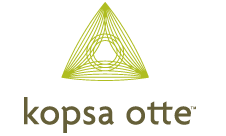I presume everyone knows that Congress, as part of the Health Care Legislation, has put a 10% excise tax on indoor tanning. This law goes into effect on July 1, 2010.
You've probably already heard that in the original bill there was going to be an excise tax on all cosmetic procedures. They called it the "Botax." The White House and Senate Democrats have turned to a proposal to tax breast implants, tummy tucks, wrinkle-smoothing injections and other procedures as they search for ways to pay for costly health care overhaul plans.
Vanity was an easy target as lawmakers scraped for cash for the nearly $1 trillion plan to expand health care to millions of Americans who lack insurance. But it was no joke to the drug makers, people who perform the cosmetic nips and tucks and most importantly people that could afford the procedures. They fought back and Congress and the President backed down and settled instead for a tax on tanning.
Here are some things you need to know if you provide tanning services.
• This is not a sales tax but it looks like a sales tax. The tax is what is known as an “excise tax.”
• The tax rate is 10% on all tanning after June 30, 2010.
• The tax is to be collected from the customer.
For example: Lisa Healthiglo, an ardent tanner, uses the tanning booths at Acme Tanning, Inc. to keep her tan during the fall and winter months. Typically, Lisa pays $30 for a 20-minute session. Under the 2010 Health Care Act, Lisa has to pay an additional $3.00 in tax (10% × $30) for each tanning session. Lisa does not, however, have to pay the tax on the grossed-up cost of the tanning services ($30 + $3).
• Tanning subject to the tax is defined as: defines “indoor tanning service” as a service that uses any electronic product that's designed to incorporate one or more ultraviolet lamps, and that's intended for the irradiation of an individual by ultraviolet radiation, with wavelengths in air between 200 and 400 nanometers, to induce skin tanning.
• The term “indoor tanning service” excludes any phototherapy service performed by a licensed medical professional.
For example: Jillian Jones, a psoriasis sufferer, undergoes phototherapy sessions at her dermatologist's office to keep the disease in check. Jillian pays $150 for a 30-minute session, a portion of which is paid for by insurance. Because phototherapy services performed by a licensed medical professional are exempt from the 10% tax on indoor tanning services, Jillian's treatment sessions are not subject to the tax.
• Spray tanning is not subject to the 10% tax.
• If the tax is not collected from the customer then the company must pay the 10% and remit to the IRS.
• The tax is remitted to the IRS quarterly using form 720 Quarterly Excise Tax Report. This IRS is including a new line on the form.
If you have any questions please let me know.
Larry Kopsa CPA
skip to main |
skip to sidebar


Kopsa Otte CPA's have been called the “financial and tax go-to-professionals” for Salons and Spas. Larry Kopsa CPA has been in accounting and tax since 1972, specializing in the area of Salons and Distributors for the last 20 years. For more information about Kopsa Otte services, please contact Larry via e-mail at lkopsa@kopsaotte.com or call 800-975-4829.

Visit us on Facebook at:
Visit us on Twitter at:
Blog Archive
-
▼
2010
(269)
-
▼
June
(28)
- IF GOD HAD TEXTED THE TEN COMMANDMENTS TO MOSES: ...
- QUOTE OF THE WEEK
- SURPRISE...SURPRISE - NEW HOME SALES DROP AFTER GO...
- 74th WEALTHIEST PERSON DIES-PASSES FORTUNE TO CHIL...
- IF GOD HAD TEXTED THE TEN COMMANDMENTS TO MOSES:
- TANNING TAX FAQs
- QUESTION ON HEALTH INSURANCE AND W-2 TAX FORMS
- QUOTE OF THE WEEK
- NOTE ON S CORPORATIONS - I MAY HAVE JUMPED THE GUN
- FOOD STAMPS TOP 40 MILLION
- MOONING A FELLOW EMPLOYEE IS NOT GROSS MISCONDUCT
- EMAIL SAYING EMPLOYEES WILL HAVE TO PAY INCOME TAX...
- QUOTE OF THE WEEK
- REPAYMENT OF LOAN TO SHAREHOLDER FROM S CORPORATIO...
- NEW LAWS THAT MAY IMPACT YOUR BUSINESS
- ONLY 1 WEEK LEFT TO REGISTER FOR OUR FREE WEBINAR
- HOW MUCH OIL HAS LEAKED INTO THE GULF OF MEXICO?
- IRS ISSUES REGULATIONS ON NEW INDOOR TANNING TAX
- IDEA BEING FLOATED TO PUT SENIOR CITIZENS IN JAIL
- HIRING YOUR CHILD
- CAN I AVOID TAX IF SALE PAYMENT GOES TO THE BANK?
- TANNING TAX EFFECTIVE JULY 1, 2010
- QUOTE OF THE WEEK
- DEDUCTING TRAVEL EXPENSES
- NEW LAW WILL REQUIRE SOME S CORPORATION OWNERS TO ...
- HERE IS A COOL TOOL TO ASSIST YOU IN ANALYZING YOU...
- CALLING THE IRS
- RANDOM THOUGHT OF THE WEEK
-
▼
June
(28)
Wondering about the IRS’s important due dates? Gain access by clicking the link below.

